Description
Excavated at Szigetvar, Hungary, the site of one of the most important battles in European
History, this saber features a 33 ½” curved single-edged blade with single fuller; broadened
and double-edged for the last 12 ½”. The ricasso is stamped with a crescent moon mark
and an “x” mark and is likely of Italian manufacture. The hilt is typical of early Hungarian
swords, with iron guard of broad, flat ribbon section, expanded at the finials and recurved
horizontally in an “S” shape. The pommel is of flattened pillow-shape with central disc,
typical of early Hungarian swords, and the forerunner of the Schiavona pommel. Overall
length 39 ½”. Very good cleaned excavated condition, with scattered pitting; the blade
sharpened and the pommel with minor encrustation. A very similar example is illustrated in
“Europaische Hieb-und Stichwaffen”, by Muller, Kolling, and Platow (published 1984),
page 171, figure 33, and described as dating to the end of the 15th C.
Szigetvar (sziget meaning “island”, and var meaning “castle”) is an ancient town in
southwestern Hungary, and was the scene of heavy fighting between Hungary and the
Ottoman Empire during the 16th C. After all the small castles in the region were captured,
Szigetvar was isolated and alone in Ottoman territory. Sultan Suleiman the Magnificent had
his sights on Vienna, and couldn’t allow Szigetvar to remain in Hungarian hands. He led a
force of around 150,000 men to besiege the castle and its 2300 Croatian and Hungarian
soldiers led by Croatian-born Count Nikola IV Zrinski (Miklos Zrinyi). The castle was
surrounded on three sides by water, so that the Ottoman forces could only attack in one
direction. The siege began on August 6, 1566, lasting over a month, with several major
attacks being repulsed, resulting in over 20,000 Ottoman casualties. On September 6,
Suleiman died in his tent and his passing was kept a secret to prevent a collapse in
Ottoman morale. The siege continued under the Grand Vizier, who launched the final
attack a day later. After a bombardment with cannons and Greek Fire, which left the castle
and much of the city in flames, Zrinski led a few hundred survivors on a final counterattack.
Though they killed hundreds of Turks, they were eventually overrun and Zrinski was killed
by bullets and arrows. Seven defenders managed to flee and a few defenders were spared
in honor of their bravery, but the rest were killed, as well as all the Christian civilians. Zrinski
had the last laugh, having left a slow match to the magazine burning, which killed about
3,000 Turks when it exploded. While technically a Turkish victory, their casualties are
estimated at between 20,000 and 35,000, and it ended the campaign to capture Vienna.
Much later, the infamous Cardinal Richelieu referred to it as “the battle that saved the
civilization”.
Szigetvar remained in Turkish hands for more than 100 years and it is rumored that the
Grand Vizier broke with Islamic law and had Suleiman’s body embalmed, entombing his
heart in a golden casket near where he died, while the body was transported back to
Constantinople to be laid to rest in the imperial mausoleum beside the Suleymaniye
Mosque. A Turkish settlement near Szigetvar appears on old maps as Turbek, derived from
the Turkish turbe, meaning “tomb”. While such a tomb has yet to be found and many
historians are skeptical that it even exists, the legend is believable enough that the Turkish
Government funded an archaeological search to discover the tomb and to mark the 450th
anniversary of Suleiman’s death.
This saber is certainly a veteran of the Ottoman conflict, known as “The Little War”, and was
possibly used at the siege of 1566. It was recently acquired from an American who was on
diplomatic service in Hungary in 2002, when he purchased it from a Hungarian dealer.
Included is his original sales receipt and some historical commentary collected from the
previous owner

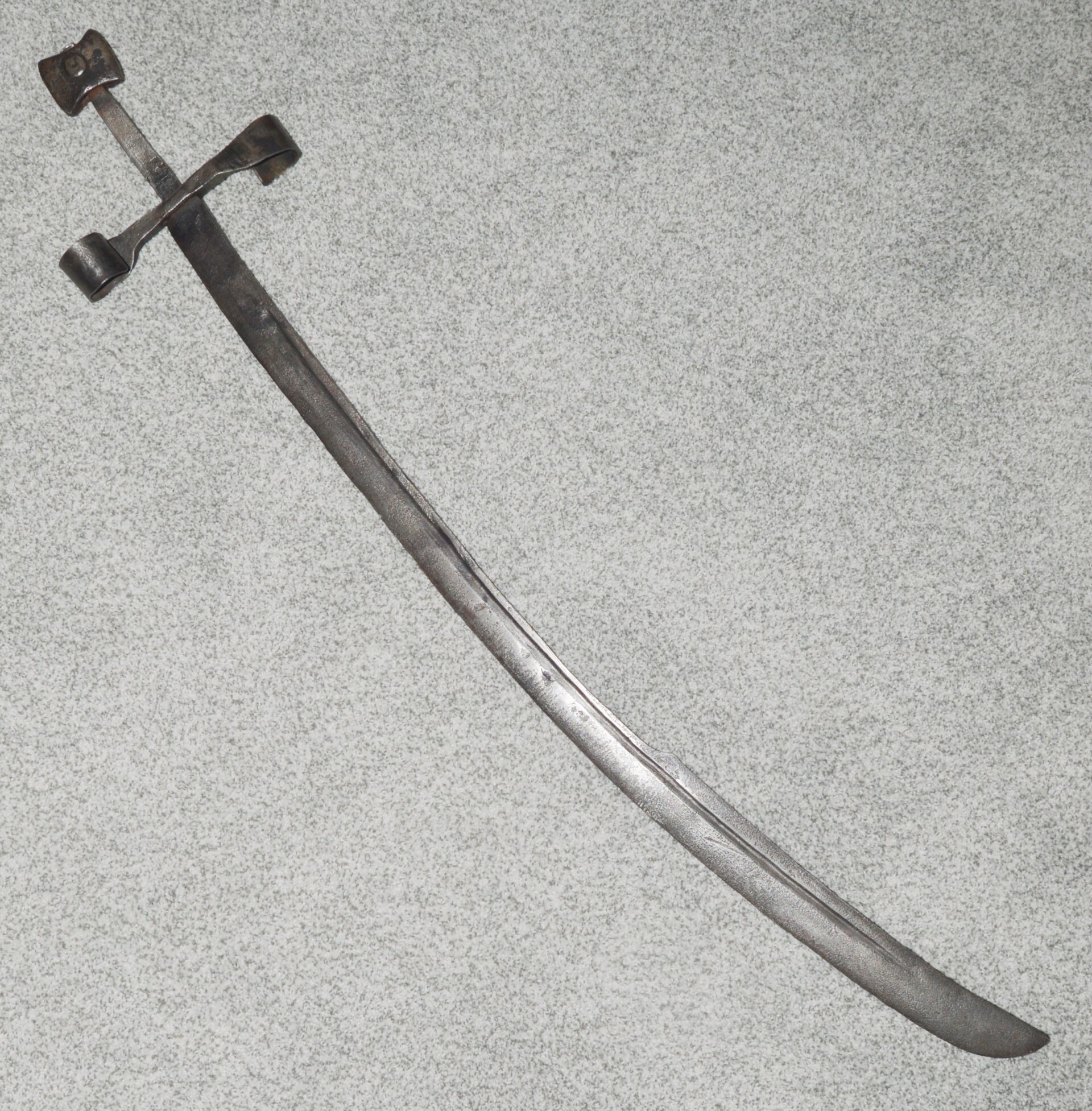
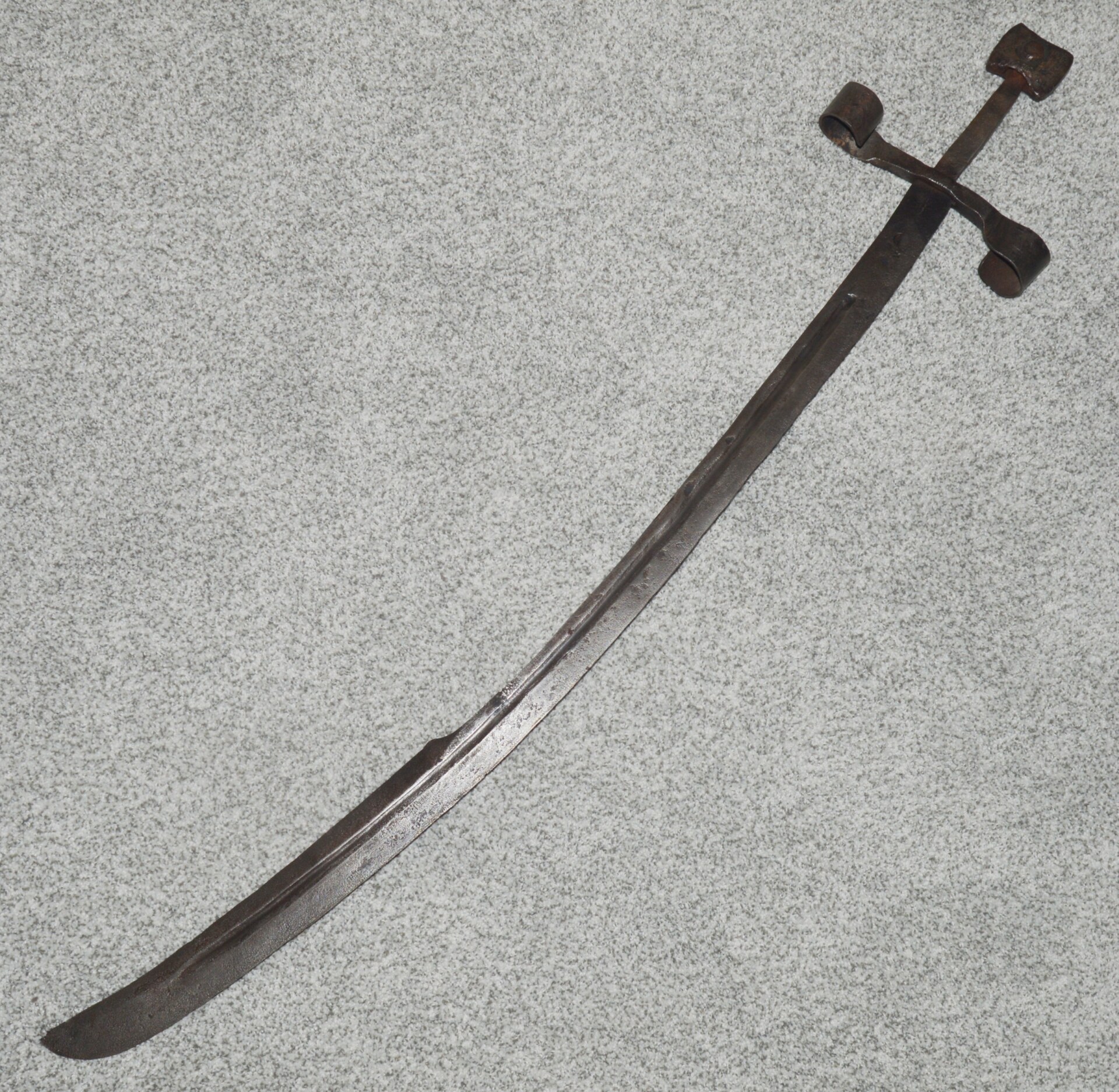
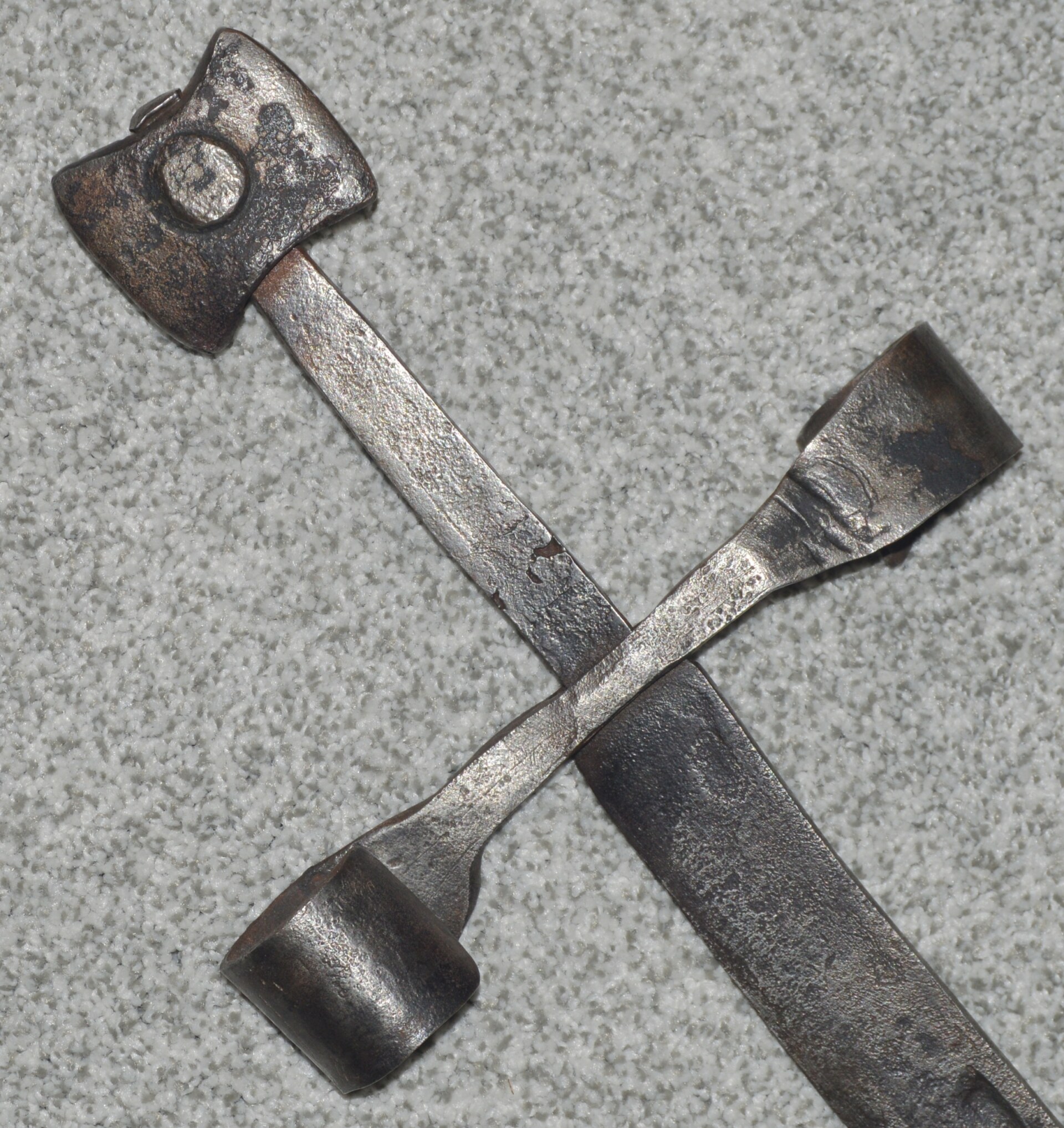
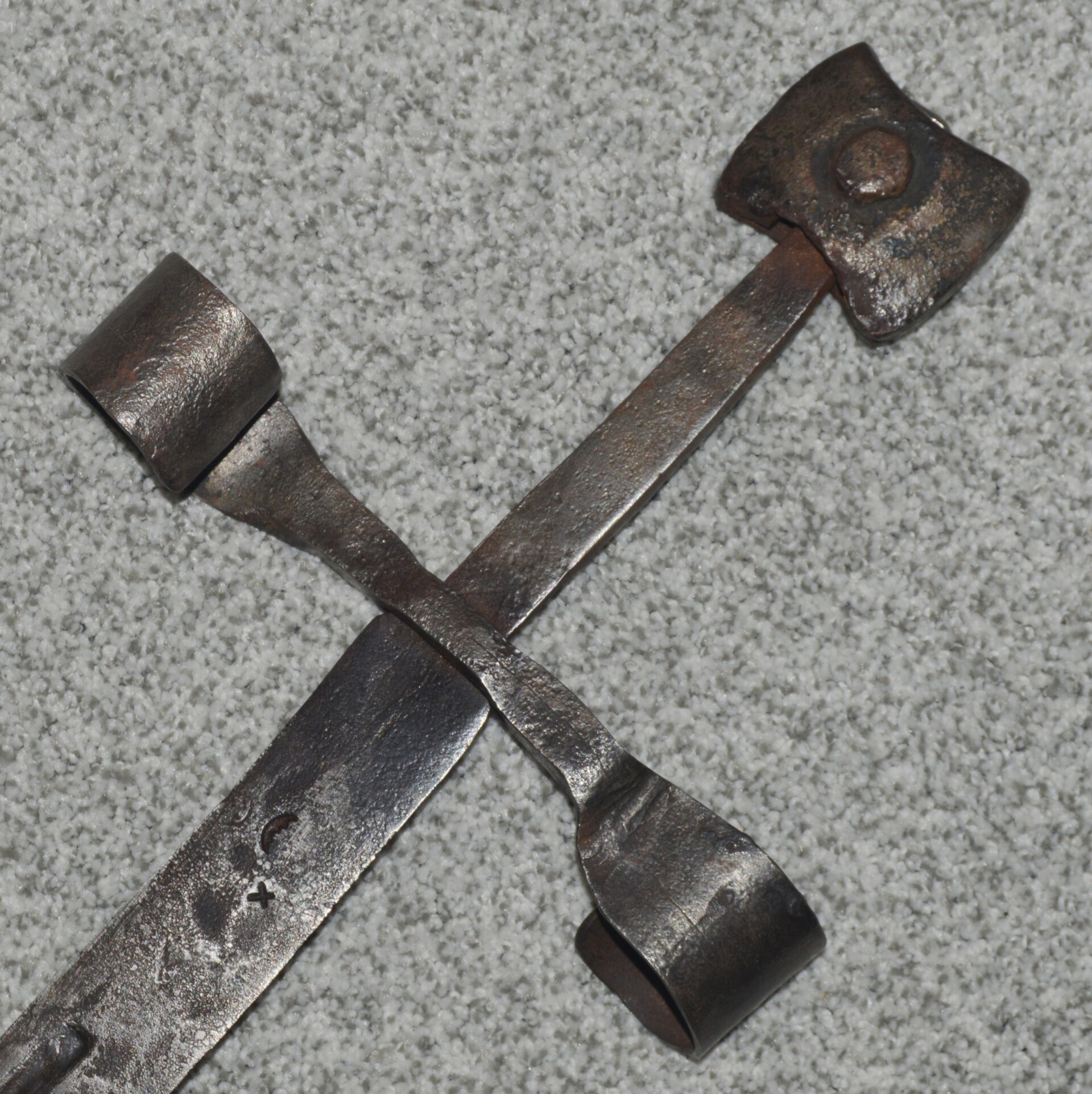
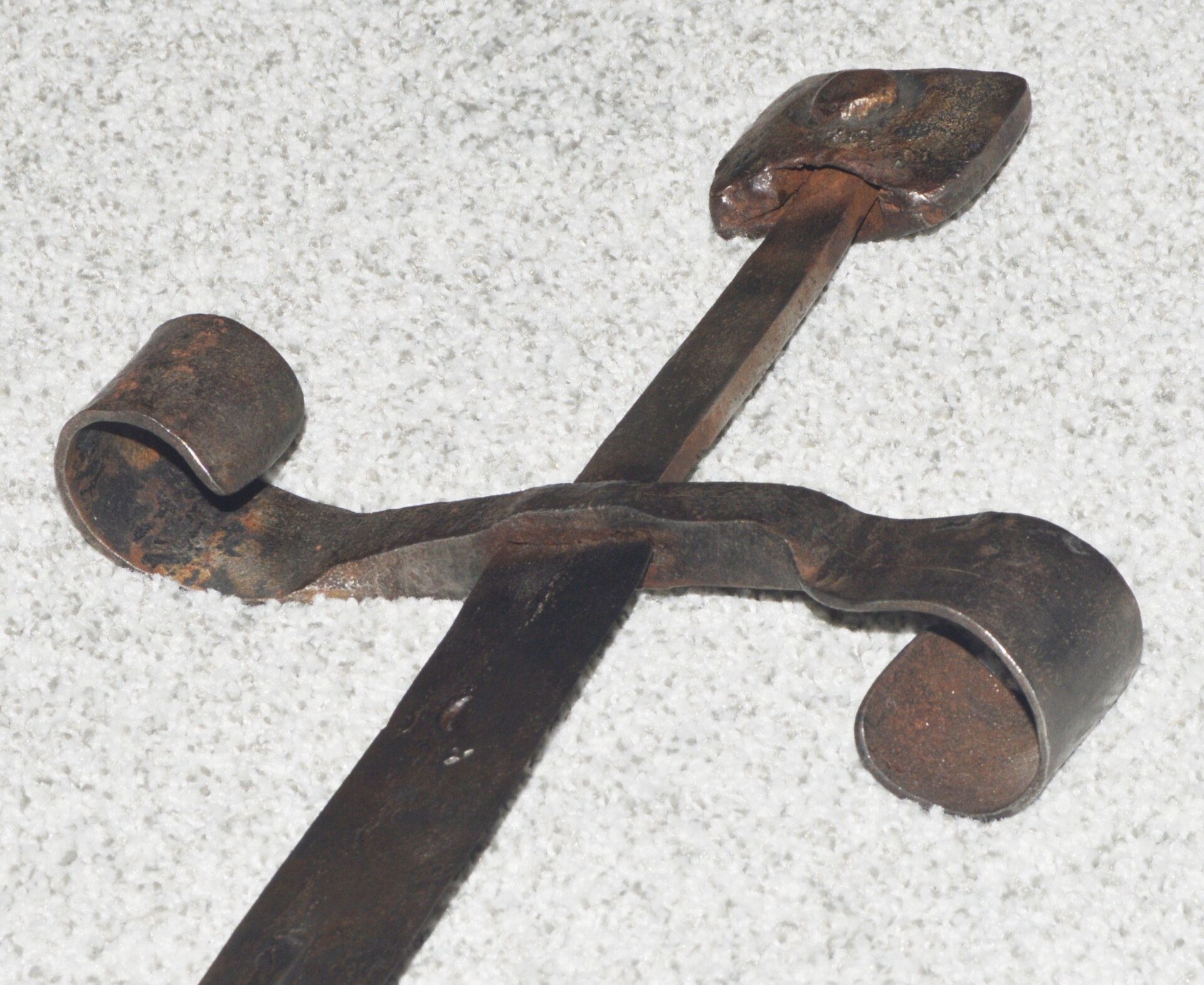
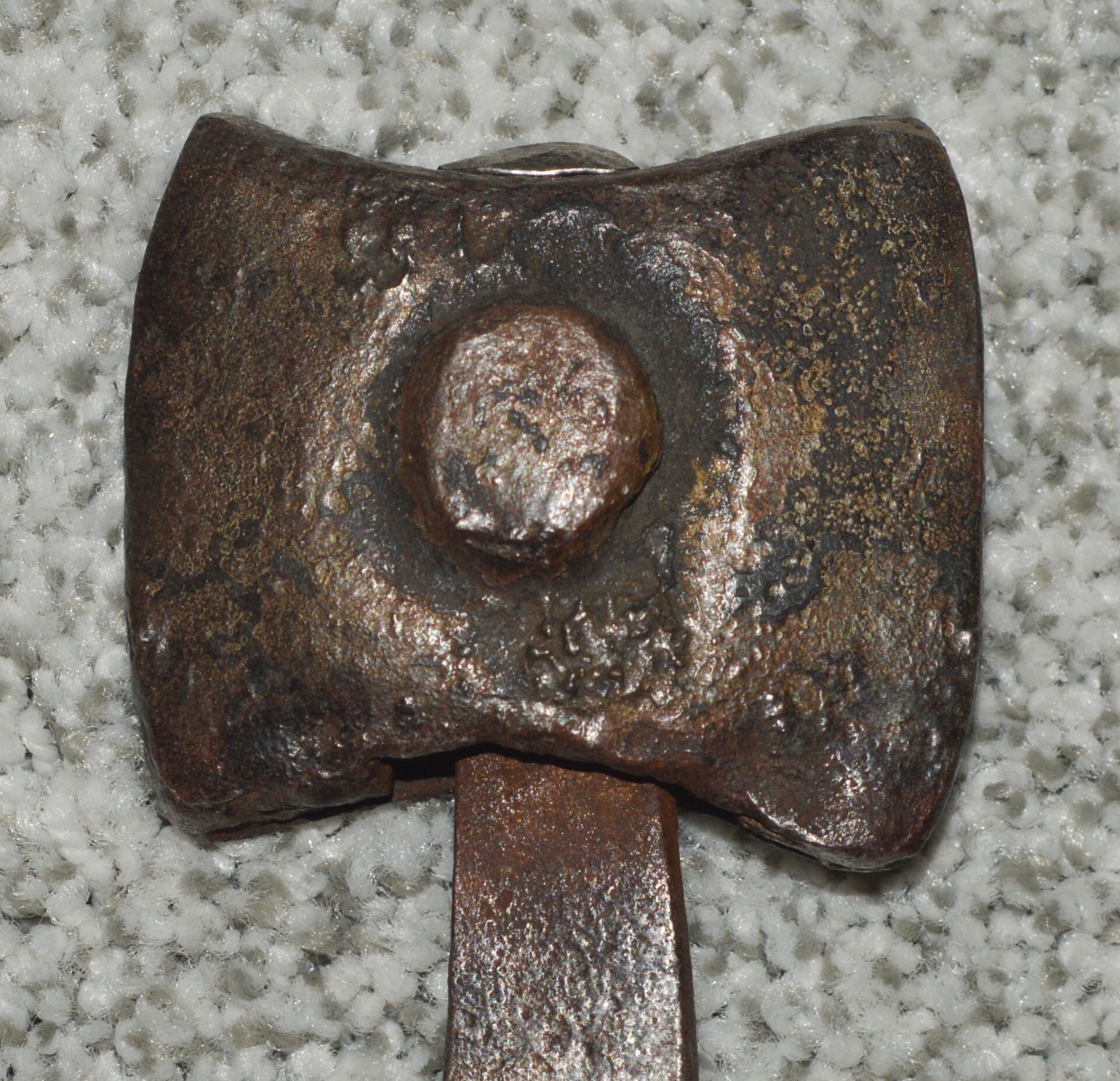
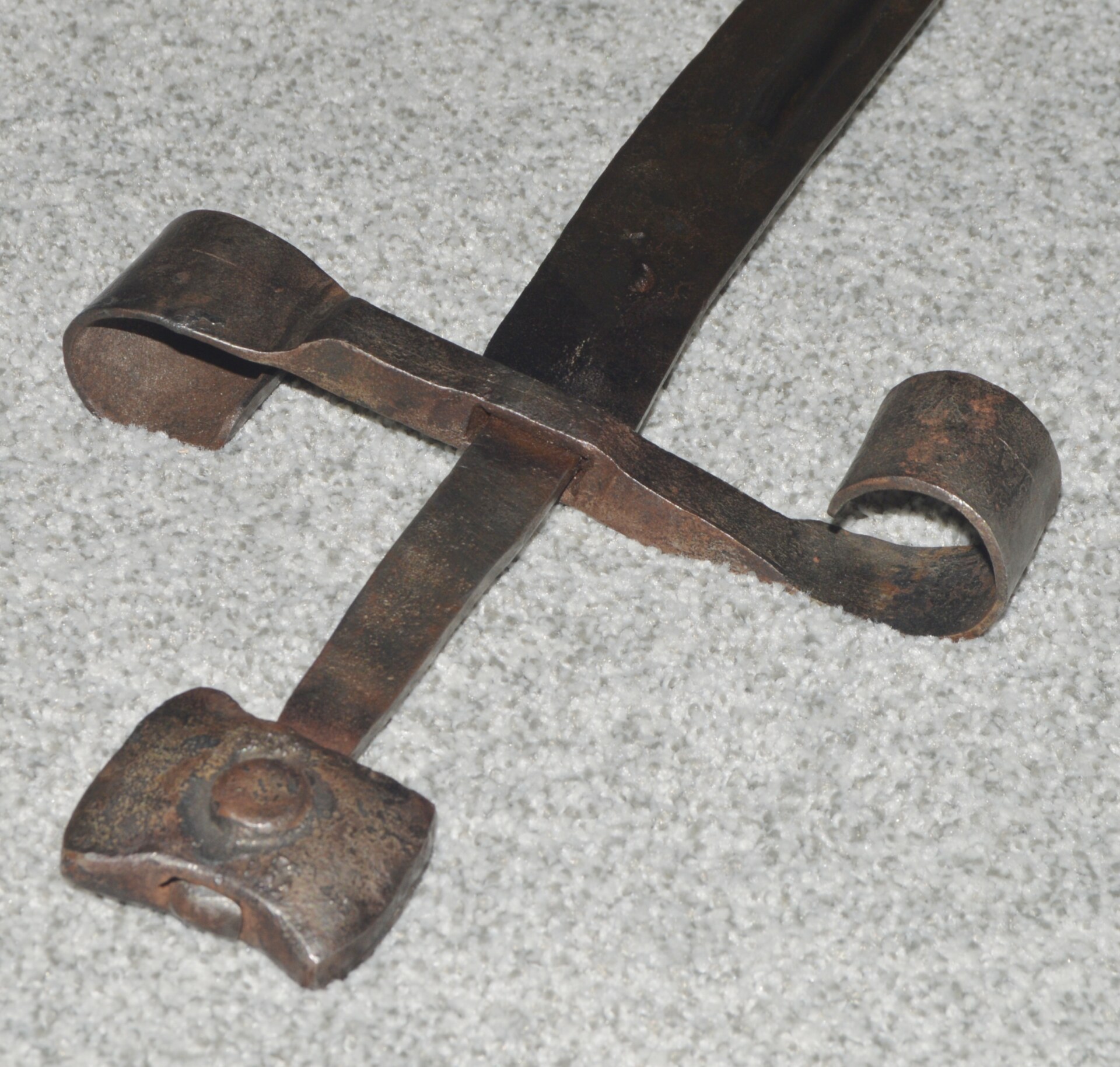
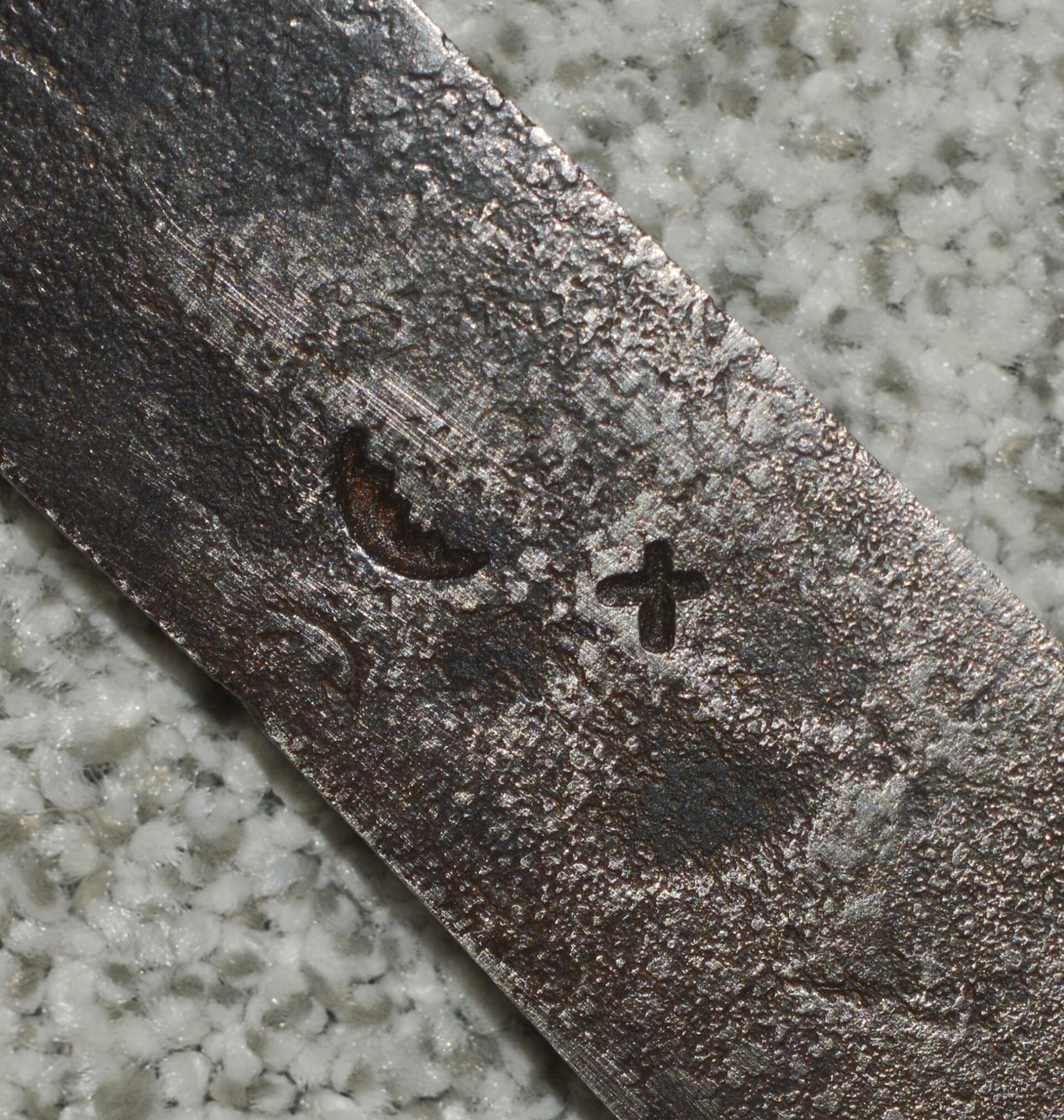
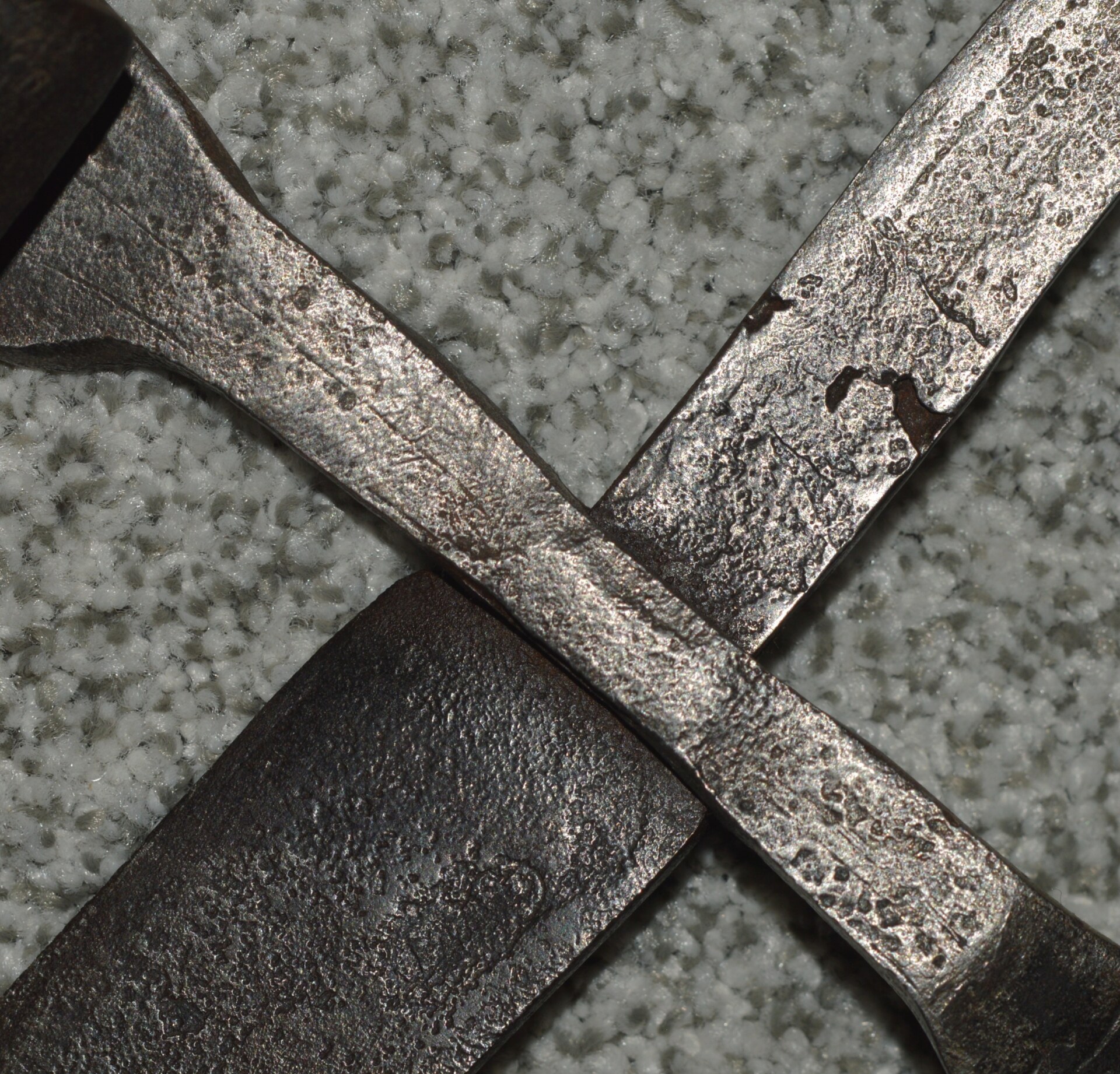
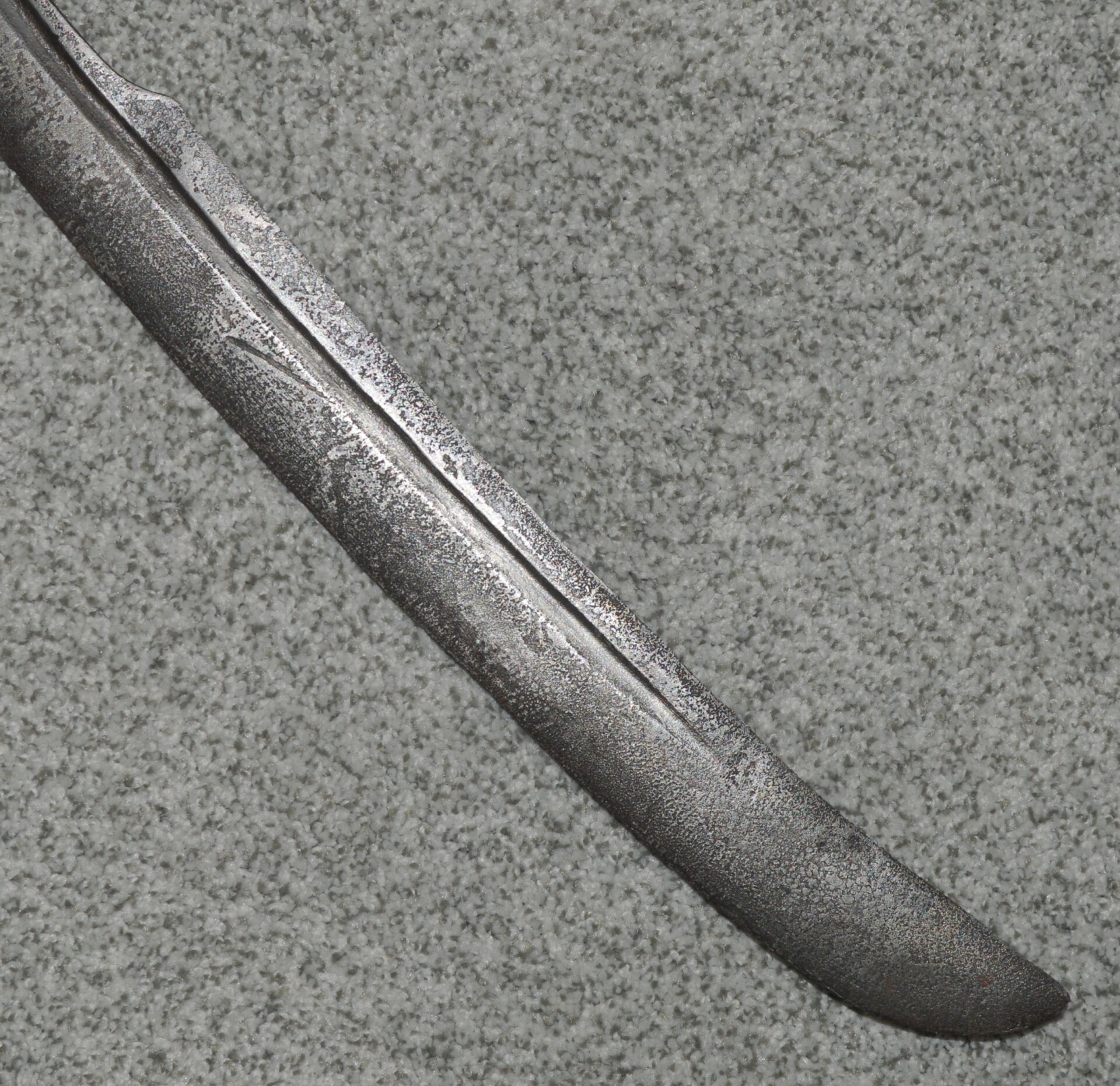

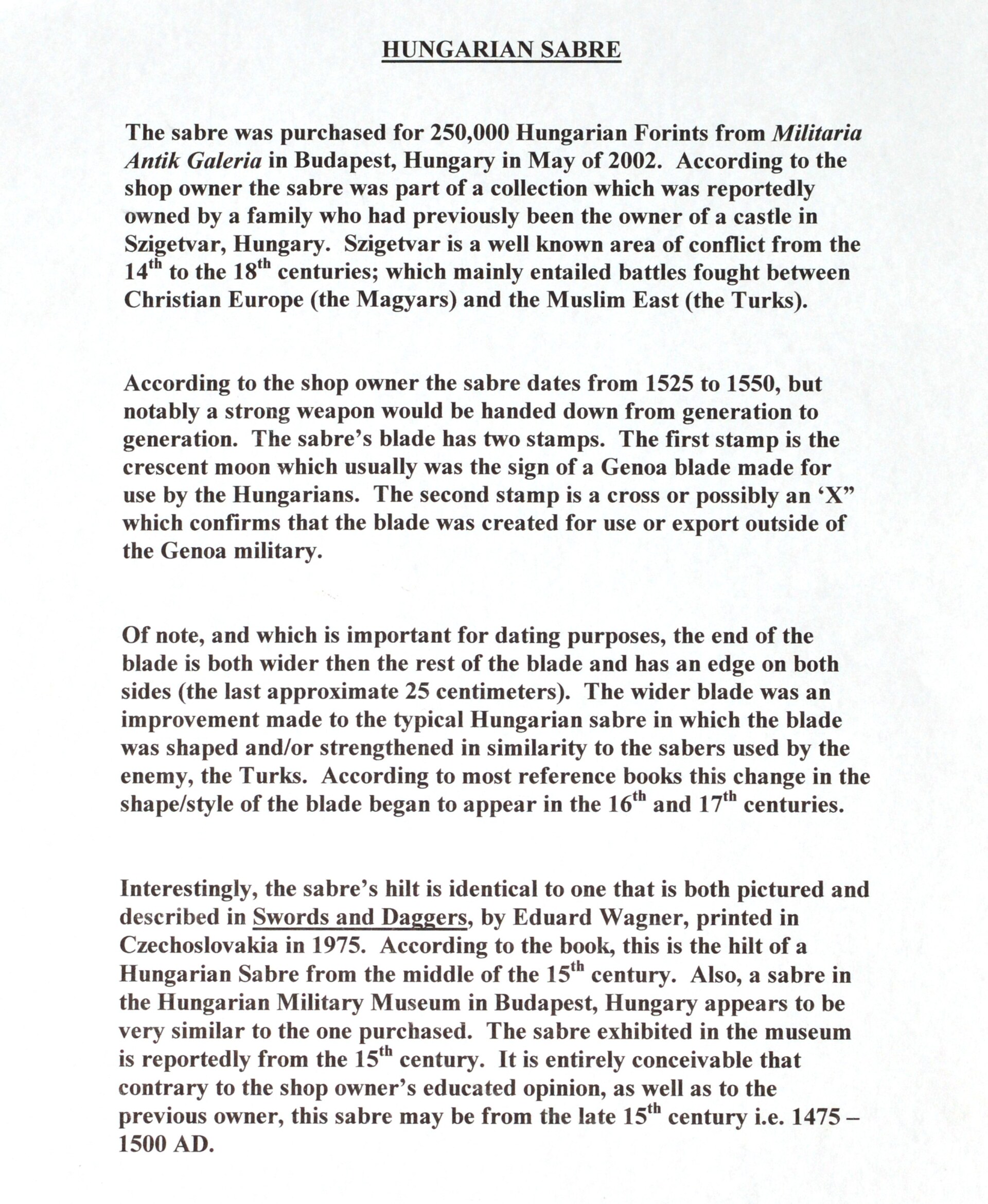
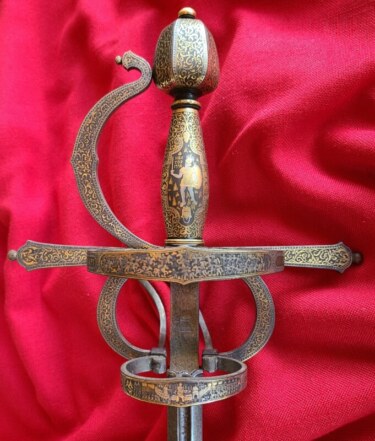 Gold and Silver Damascened Rapier in the Style of Diego DeCaias, Dated 1556
Gold and Silver Damascened Rapier in the Style of Diego DeCaias, Dated 1556 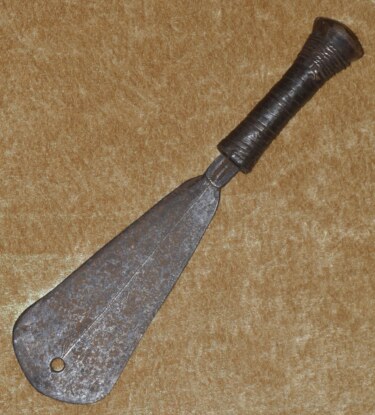 Central African Yakoma Club Knife, 19th C
Central African Yakoma Club Knife, 19th C  US Civil War Smith Carbine by American Machine Works
US Civil War Smith Carbine by American Machine Works 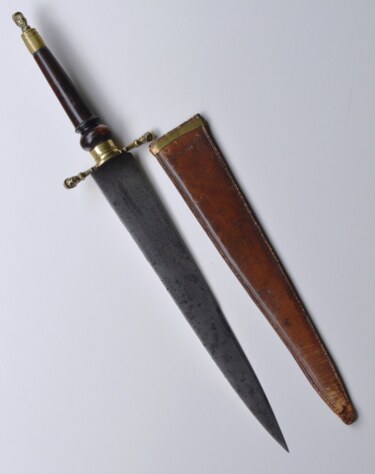 English Helmet-head Plug Bayonet, Last Quarter 17th C
English Helmet-head Plug Bayonet, Last Quarter 17th C